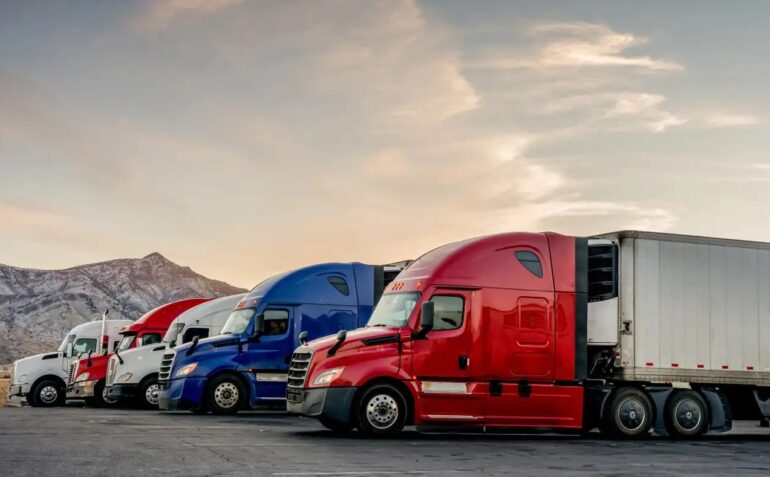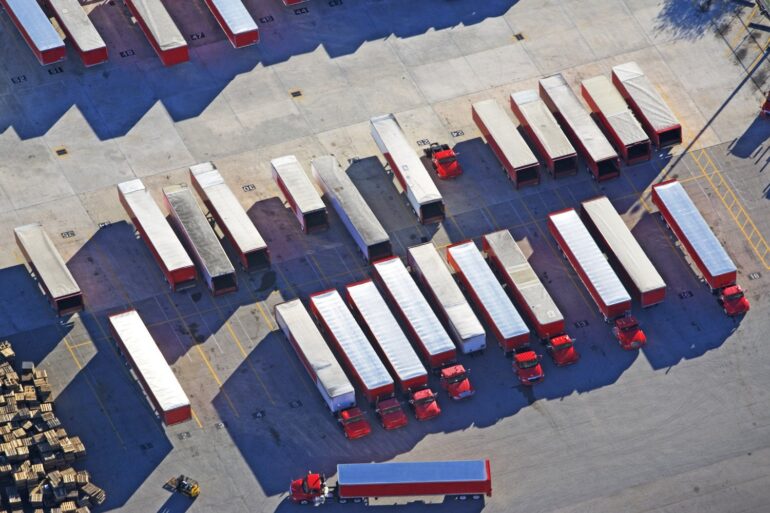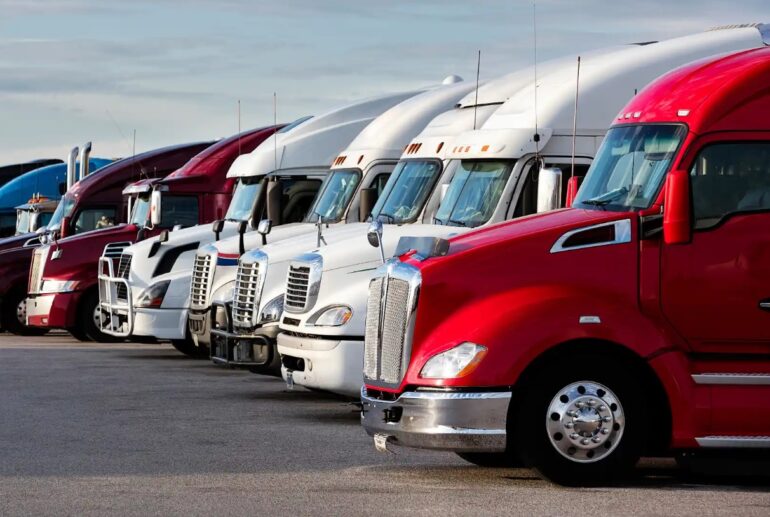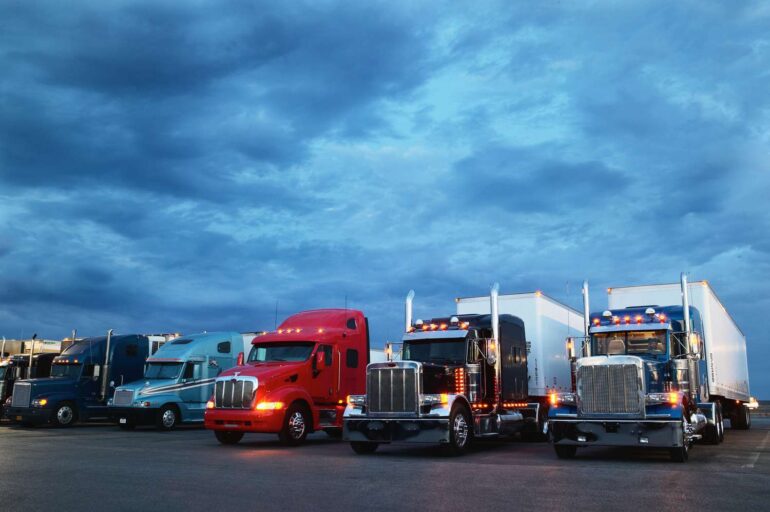We live in an increasingly connected world. Globalization and the Internet have made it easier to connect with people halfway across the world. Businesses need to ship things now more than ever.
Which is why starting a trucking business in 2024 is a fantastic idea. But if you have a clear vision and grit but do not know how to get your business off the ground, you are in the right place. We will walk you through all the steps for establishing a successful trucking business.
7 Steps For Starting A Trucking Business in 2024

There are some tried and true steps when it comes to starting any business. If you want to get into the world of trucking business head-first, here are some crucial steps you need to follow:
Step 1: Have a Business Plan and Structure
Any new business that stands a chance of surviving needs a solid plan and structure. This is one of the stages where you should spend the most time.
Gather answers to critical questions like how many trucks do you want to start with, which markets do you want to target, etc. Crafting a good business plan will pay off in multiples, and your operations will be more focused.
Additionally, you need to decide how you want to structure your business as well. The structure will affect a couple of things, like taxes and other financial liabilities. A solid 2024 trucking tax guide will also help you “hit the road” running!
Step 2: Select Your Target Market
The trucking business is competitive. For new businesses, securing customers will be tough, too, since you will be competing against established players.
However, a large chunk of your success will depend on choosing the right target market. Selecting a target market allows you to make measured and strategic business decisions.
Research your target market’s problems and how your trucking business can solve them. There is no right answer here. You can select a customer persona or specific regions as well.
Step 3: Take Care of Legal Requirements (License, Permits and Insurance)
After you have your target market locked in, take care of all the legal legwork. This part is crucial and needs to be done with utmost care. Ensure you have all the important legal documents like tax ID, insurance, permits, licenses, and business bank accounts.
Keep in mind however, laws will vary depending on which region you want to start your trucking business in. This is why you should work with professional lawyers.
Additionally, a Commercial Driver’s License (CDL) is one of the most important legal documents you will need. We will dive a bit deeper into CDLs a bit later. However, without a license you will not be able to drive a truck.
Possible licenses and permits you might need are:
- U.S. Department of Transportation number
- Employment Identification Number (EIN)
- Standard Carrier Alpha Code (SCAC)
- International Fuel Tax Agreement (IFTA) stickers
Step 4: Secure Funding
Cashflow and funding are the lifeblood of any new business. Securing funding is a very crucial next step. Trucking businesses have high capital costs. You will need to buy trucks and equipment, hire drivers, and more.
Moreover, there are also upkeep and maintenance costs. Getting startup funding is a skill of its own. However, if you do it right, and sell your vision, you can secure high funding numbers.
Fortunately, there are different kinds of loans you can look into, such as short-term Business loans and, of course, SBA loans.
Step 5: Build Up Your Team and Fleet

After you have secured funding, step 5 is to put those funds to use. You need to build up your fleet and team. Additionally, you will also need to buy proper equipment for daily operation.
Reliable equipment is particularly important for a trucking business. Trucks are the most important, unsurprisingly. However, there are other important equipment as well. For example, electronic logging devices, different types of trucks, and more.
Take a step back and look at what you can get with your budget. There are different kinds of trucks in the market. Research the kind of truck that is perfect for the type of cargo you wish to haul.
Step 6: Establish Efficient Business and Process Management Processes
A streamlined and efficient business process is very important for smooth operation. Good business processes also decrease costs. And in the trucking business, you want to keep costs low without affecting quality, of course.
Prepare a good fleet management system, train your drivers well, and ensure there are protocols for all common scenarios. Smart route planning will also keep costs and truck downtime low.
Step 7: Reach Out To Customers
Lastly, it is time to put the pedal to the metal and get some sales. Each customer you get initially is an opportunity to prove yourself. Therefore, you need to treat the first job for every customer with extra care (not to say you should slack in the later jobs).
Customers want to work with companies that are reliable. Preferably someone they already know. This can be challenging for new businesses. The best way to get your first couple of customers is from recommendations, and referrals.
Reach out to people you know. Friends and family are always a good first option. There are other ways to hunt for customers as well. Cold email trucking boards are quite effective.
However, in 2024, you must have an online presence. The internet’s scale is huge, and you can reach a much wider audience.
How Many Trucks Do You Need to Start a Business?

Here is the good news: you can get started with just one. Really, you can! You can even just drive yourself. Frankly, we advise you to make the first couple of deliveries anyway.
The first deliveries will establish your reputation. Coming back to how many trucks you need to start, just one is fine if you are tight on budget. Most of the trucking companies have two to ten trucks in total.
What is a CDL?
A CDL is a commercial license for driving large vehicles like trucks. They are issued by the Federal Motor Carrier Safety Administration (FMCSA). If you want to operate any vehicle that’s above 26,001 lbs, you will need a CDL. There are different classes of CDLs, though:
- Class A
- Class B and
- Class C
For a trucking business, a Class A CDL is the one you want. However, if you are gonna drive smaller trucks, a Class B CDL might also do. You do not strictly need a CDL for your business to run a trucking business per se.
However, you must hire drivers that have a CDL, in that case. So, technically, it is a necessity either way.
Wrapping Up

These steps are all you need to start your trucking business in 2024. Pay extra attention to your legal paperwork, business structure, and processes.
These are going to be crucial for your success. Fortunately, the trucking business is profitable, albeit competitive. But hey, when has something profitable not been competitive?
